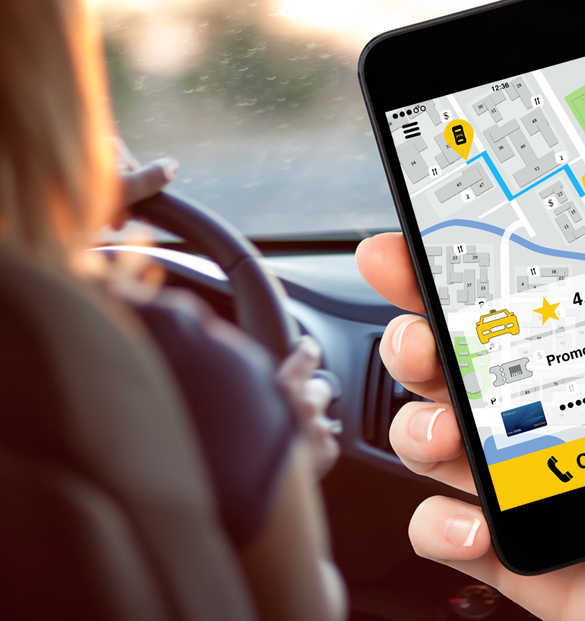Home > Unicorn Taxi Dispatch System
How to choose a Taxi Booking and Dispatch System
 Choosing the right taxi dispatch system is critical for optimizing operations, improving customer satisfaction, and staying competitive in the taxi industry.
Below is a step-by-step guide to help you select the best taxi dispatch system for your business, based on key criteria and practical considerations:
Choosing the right taxi dispatch system is critical for optimizing operations, improving customer satisfaction, and staying competitive in the taxi industry.
Below is a step-by-step guide to help you select the best taxi dispatch system for your business, based on key criteria and practical considerations:
-
1. Identify Your Business Needs
Fleet Size and Scalability: Determine the size of your fleet (e.g., 10 or 100+ vehicles) and whether the system can scale as your business grows. Ensure it supports expansion without requiring significant additional investment.
Operational Goals: Clarify your priorities, such as reducing wait times, automating dispatching, improving driver productivity, or enhancing customer experience.
Booking Types: Consider whether you need to manage immediate bookings, pre-scheduled rides (e.g., airport transfers), or corporate accounts.
Budget: Define your budget for setup costs, monthly subscriptions, and potential customization. Look for systems with transparent pricing (e.g., per driver, per month). -
2. Evaluate Key Features
Ensure the system includes essential features to streamline operations and meet customer expectations:
Real-Time GPS Tracking: Enables dispatchers to monitor vehicle locations and assign the nearest driver, reducing wait times and improving safety.
Automated Dispatching: Uses algorithms to assign rides based on proximity, driver availability, or driver position in the queue.
Mobile Apps: Look for driver and passenger apps (iOS and Android) with intuitive interfaces for booking, tracking, navigation, and payments.
Caller ID and Telephone System Integration: If you have an existing telephone system, check to make sure that the despatch system can be integrated with your telephone system. Payment Processing: Supports multiple payment methods (cash, card, invoice) with secure, seamless transactions. If you plan to offer card payment in the cars ensures that the driver app supports such feature.
Reporting and Analytics: Provides insights into ride volumes, revenue, driver performance, and customer feedback to optimize operations, as well as documents expiry and maintenance schedules.
Ride Sharing: check that it supports vias and additional stops with passengers' names and contact details.
Customer Support Features: Includes notifications (e.g., ETA, driver details), lost-and-found and complain recording, and feedback management.
Taxi Dispatcher Panel: Offers centralized dashboards for managing bookings, drivers, and fleets in real time.
Customization: Allows branding the apps (e.g., logo, colors) and feature adjustments to suit your business model. -
3. Cloud based or in-house dispatch system
Cloud-Based Systems: Prefer cloud-based solutions for scalability, remote access, and data security. They reduce the need for on-site hardware and ensure regular updates.
In-house Systems: The in-house systems are not suitable for companies with less than 50 drivers and needs investments in hardware nad infrastructure such as internet connections.
Integration Capabilities: Check if the system integrates with existing tools like payment gateways, CRM systems, or third-party apps.
-
4. Assess User Experience
Ease of Use: Ensure the system is intuitive for dispatchers, drivers, and passengers. A complex interface can lead to errors and slow adoption.
Driver App: Drivers should be able to accept jobs, progress through the booking, navigate, and manage payments with minimal effort. Drivers may also need to monitor its position in the queue, allocated bookings and booking history.
Passenger App: The app should offer easy booking, clear vehicle selection, and real-time tracking to compete with ride-hailing giants like Uber. -
5. Check Reliability and Support
Uptime and Performance: Choose a system with robust reliability to avoid downtime during peak hours.
Customer Support: Opt for providers offering 24/7 support, quick issue resolution, and comprehensive training.
Updates and Maintenance: Ensure the system receives regular updates to fix glitches and add features, keeping it competitive. -
6. Compare Pricing
Pricing Models: Evaluate whether the system uses subscription-based, setup fees, and what is included with the price.
Cost vs. Benefits: Assess how features like automation and analytics can reduce operational costs (e.g., up to 60% savings) and increase bookings.
Free Trials/Demos: Test the system with a free trial or demo to ensure it meets your needs before committing. -
7. Review Scalability and Flexibility
Ensure the system can handle growth in bookings, fleet size, or geographic expansion.
Check if it supports multi-fleet management or additional services like delivery or school runs.
Look for systems that allow you to set custom rules (e.g., pricing, vehicle types) to adapt to market demands. -
8. Research Providers and Reviews
Customer Reviews: Seek advice and reference from the current users of the system, and verify their satisfaction.
Industry Experience: Prefer providers with taxi industry expertise to ensure the system addresses specific challenges. Not all dispatch system are developed specifically for the taxi and private hire business. -
9. Plan Implementation
Timeline: Check how quickly the system can be deployed. Some providers offer setup in days or weeks.
Training: Ensure the provider offers comprehensive training for dispatchers, and staff to ease the transition. Most companies train the trainer.
Testing: Conduct pilot runs with a small group to identify issues before full rollout. -
10. Stay Future-Ready
Market Trends: Choose a system that aligns with industry trends, such as ride-hailing competition and demand for mobile apps.
Advanced Features: Look for innovations like surge pricing, flight tracking for airport pickups, or emergency SOS buttons to enhance safety and service.
Compliance: Ensure the system supports local regulations (e.g., driver background checks, fare transparency).